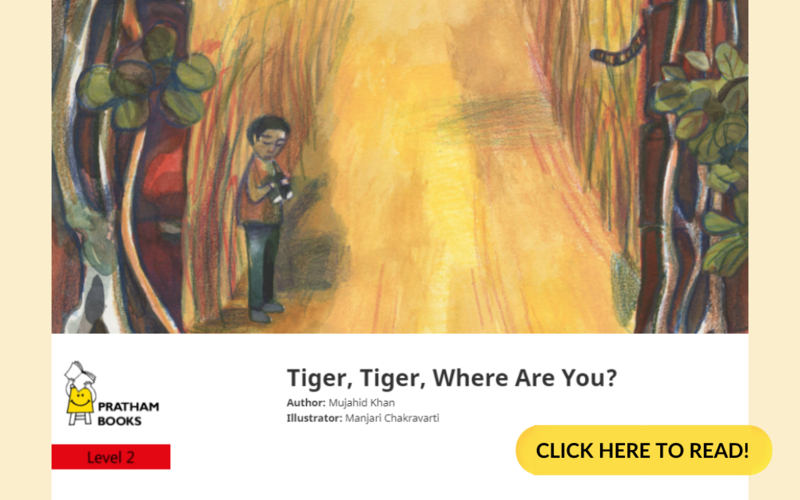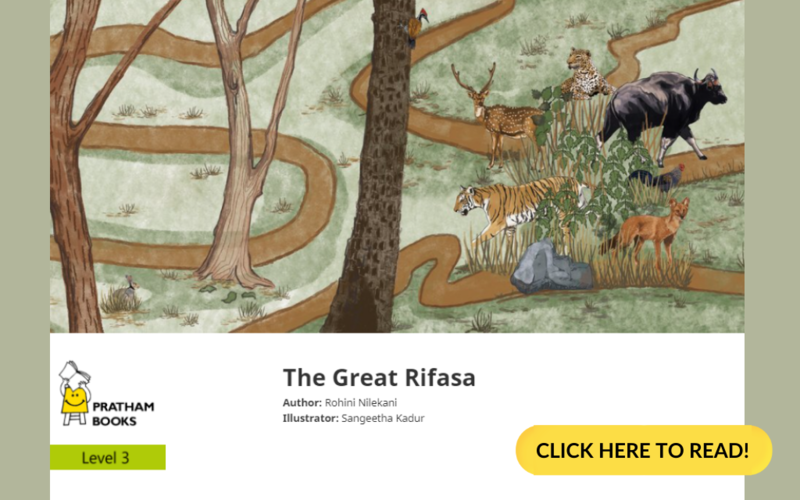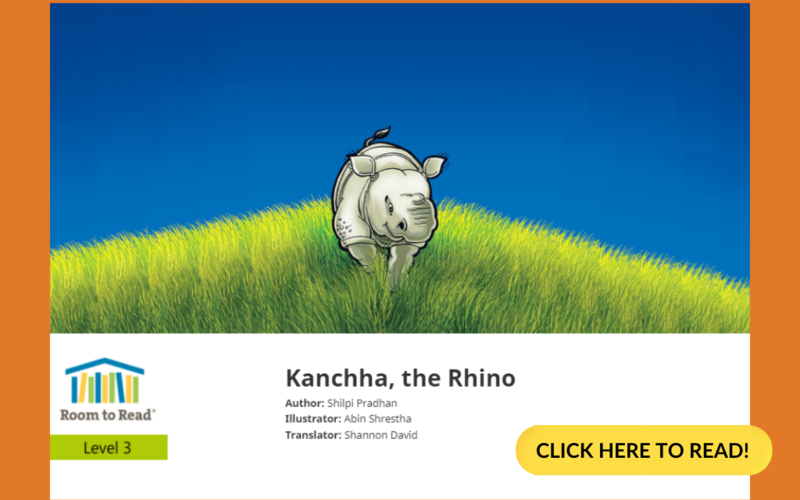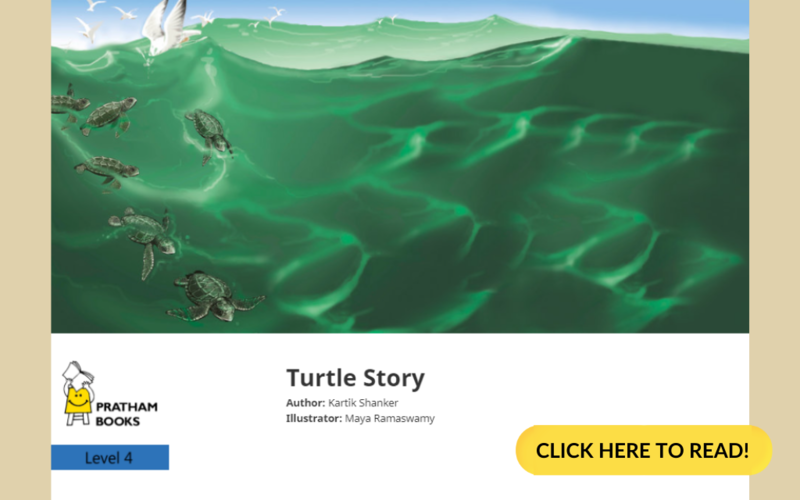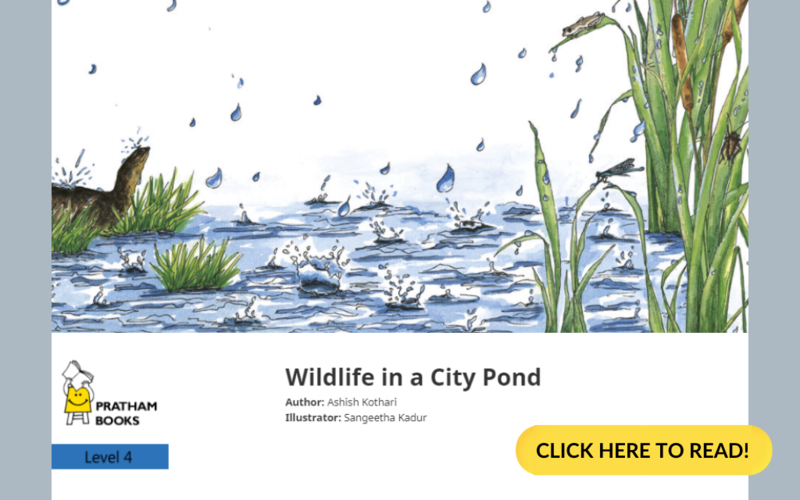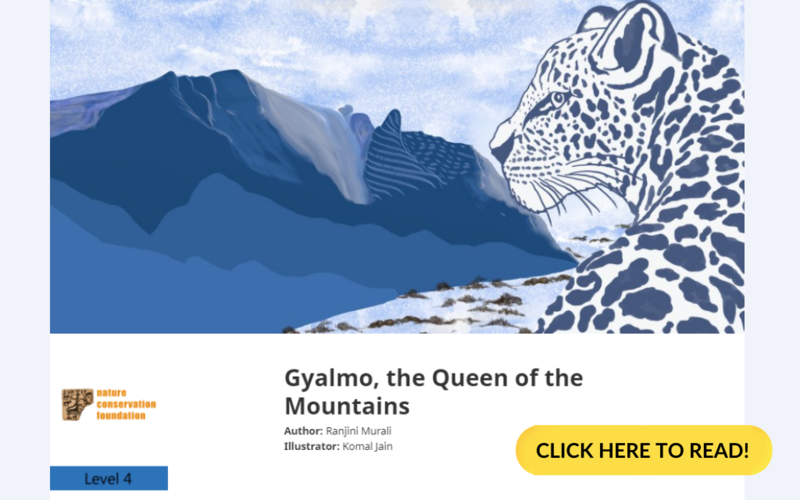New series: StoryWeaver Spotlight
Posted by Remya Padmadas on June 15, 2016
Q: What do you usually read? Which language do you prefer to read in?
Contemporary and also some relatively old Bengali writers - I like to read fiction. I also like to read books which have lot of reference to nature, or books based on history.
I prefer to read in Bangla.
Q: Do you have a favourite book / author and why is it a favourite?
'Aaranyak' by Bibhutibhushan Bandyopadhyay. When I was small, I learnt to think about nature only after reading this book. Also, it unfolded the godliness of nature to me.
Q: You have contributed to StoryWeaver immensely. How is the journey unfolding for you?
The StoryWeaver journey is thrilling and novel.
Q: Can you share one BIG thing that you have taken away from this experience?
It is toughest to write for children. To do that well, one needs to revisit childhood.
Q: How does it feel when your story gets published online?
I feel enormous joy to see my name there. Also a great happiness thinking so many young eyes are moving on it :)
Q: You have translated / reviewed a handful of stories for us. Which one has been your favourite and why?
'Reeti and Mithu'. I cried while translating it. Freedom moves me a lot. It also brought back memories of my pet parrot who used to talk and who died suddenly. I was not there with her when that happened and it shook me for a long while. I got to know what death was, for the very first time.

Q: What is your key driver in taking up Bangla translations of children's books?
I feel strongly about language - particularly about my language, Bangla. It means a lot to me - it is not only an expression - rather it has a quantity, a certain depth. Prose written by Bankimchandra is heavier than prose written by Sharatchandra. I feel strongly about stories..and of course, I love to be with my language.
Q: How else do you think we can join hands in taking bigger steps for children’s literature?
We can encourage children to write a few lines about the stories they read. We can provide them a basic plot and ask them to develop that into a story, help them become story tellers.
Q: How has the overall experience with StoryWeaver been?
স্টোরি উইভারের সঙ্গে কাজ করে অনেক শিখেছি। কখনো মজা পেয়েছি কখনো নতুন কিছু শিখেছি। মনে মনে একটি শিশু হয়ে যেতে পেরেছি।
My experience with StoryWeaver has been an enriching one - I learnt, I was amused, I felt occupied and most of all, I am happy to read innocent stories.
Q: Whats the secret of behind your truckloads of enthusiasm and super quick response time?
I am generally enthusiastic about everything. Sometimes I think I am not a grown up at all! I still itch to pick up a Pepsi bottle from behind unguarded Pepsi trucks or throw a stone on a clean and shiny window pane!
Sanghamitra Ghosh has translated several stories for us to Bengali, which you can read and enjoy here.
comment (1)Reading Recommendations for World Children's Day!
Posted by Julia M on February 17, 2022Today is World Children's Day - a time to reflect upon and renew our commitment to protect children's rights. Here is a selection of books that showcase some of the principles listed in the United Nations Convention on the Rights of the Child.
We hope that these books will be a useful resource for educators, parents, and caregivers, and that they inspire our young readers.
Ikru's First Day of School | Article 28: The right to education
What will Ikru's very first day at school be like? This heartwarming, wordless book brings alive the unexpected delights and quiet fears of a child's first experience of going to school.
A Level 1 storybook written and illustrated by Sunaina Coelho, and published by Pratham Books.
Just Like Me | Article 12: The right to form and express views freely
It’s Rahah’s birthday party. Mum wants to know who she will invite. Will they all fit in?
A Level 2 storybook written by Hani du Toit, illustrated by Mary Anne Hampton, and published by Book Dash.
Your Body is Yours | Article 19 & 34: The right to be protected from violence and abuse
Your body is unique and it belongs only to you. Get to know it, and learn to take good care of it. A book that aims to start open and healthy conversations around our bodies, and our right to say no to anyone who does not respect boundaries.
A Level 3 storybook written by Yamini Vijayan, illustrated by Aindri C, and published by Pratham Books.
I Know My Rights | Article 42: The right to know and exercise your rights
The United Nations Convention on the Rights of the Child lists out the basic rights that children have. It doesn’t matter where you come from, what colour your skin is, whether you practice a religion or not, what language you speak, whether you are a boy or a girl or haven’t decided yet – you have the right to these rights! This poster book lists out some of the rights of the child.
A Level 4 storybook written by Menaka Raman, illustrated by Sunando C, and published by Pratham Books.
SUPPORT STORYWEAVER
The United Nations Convention on the Rights of the Child states that all children have the right to an education that helps them fully develop their personalities, talents, and abilities. The ability to read is the ability to learn, explore, and imagine.
StoryWeaver is deeply committed to the goal of literacy and giving children open and free access to the reading resources and opportunities they need to succeed in school and beyond. With your help, we can do even more. Visit https://storyweaver.org.in/donate.
comments (18)StoryWeaver celebrates Wildlife Week 2021!
Posted by Julia M on February 15, 2022It is undeniable that wildlife plays an important role in maintaining the ecological balance of nature. Disruptions to the wilderness can negatively impact the ecosystem as a whole. Preserving the natural environment is therefore vital.
We have rounded up some of our favourite books highlighting wildlife. Check out the excerpts and click on the image to read the books.
‘Flippy the Flowerpecker’ is a level 1 book written and photographed by Garima Bhatia.
In this book, Flippy the tiny flowerpecker visits a eucalyptus tree to find a meal, but a surprise is in store for her!
‘Our Friends in the Wild’ is a level 2 book written by Ananta Prasad Wagle, illustrated by Samit Shrestha, and translated by Shannon David.
Throughout time, people have shared a strong relationship with animals in nature. This non-fiction poem explores the many ways that animals help humans.
‘Tiger, Tiger, Where Are You?’ is a level 2 book written by Mujahid Khan and illustrated by Manjari Chakravarti.
In the book, a tiger researcher is out looking for tiger hair and poop as part of his study. He finds plenty of signs of the tiger, but where is the big cat? After all, there are so many ways to see a tiger without seeing a tiger.
'The great Rifasa' is a level 3 book written by Rohini Nilekani and illustrated by Sangeetha Kadur.
Nothing seemed right in the Kabini forest — the monsoon hadn’t come and the human tourists in their safari jeeps seemed to have disappeared as well. The animals of Kabini get together to begin their own safari. A fun story, from a unique perspective, about the far-reaching impacts of the COVID-19 pandemic.
‘How to Be an Otter’ is a level 3 book written by Nisarg Prakash and illustrated by Rohit Kelkar.
Listen in to find out more about these wonderful river creatures, as an otter passes on wisdom to a group of otter pups.
A level 3 book, ‘Fly Safe, Godavan’ is written by Cara Tejpal and illustrated by Sanjana Desai.
In this book, Rania is determined to keep the little Godavan chick and her Ma safe. But there are so many threats to the survival of the Great Indian Bustard.
‘Kanchha, the Rhino’ is a level 3 book written by Shilpi Pradhan, illustrated by Abin Shrestha, and translated by Shannon David
This is the story of a little rhino who lives in a big grassland. He loves to explore, but one day he strays too far from his mother and gets lost. Read on to find out how he gets out of trouble.
‘Turtle Story’ is a level 4 book written by Kartik Shanker and illustrated by Maya Ramaswamy.
Under cover of darkness, baby olive ridley turtles hatch from sun-warmed eggs on remote beaches. One of them, the little hatchling who is the narrator of our story, is delighted to make it across the beach and into the ocean without losing her way or being captured by predators. But can our little olive ridley survive the dangers of the ocean? Find out in this charming life story of an olive ridley turtle, and meet several other interesting creatures along the way.
‘Moonlight in the Sea’ is a level 4 story written by Kartik Shanker and illustrated by Prabha Mallya.
Fatima grows up on an idyllic island in the Lakshadweep, watched over by Nihla, the moon. She falls in love with the underwater world of colourful corals, fascinating fish, mysterious manta rays, grizzled old turtles and dancing dolphins. One day, in a terrible storm, she gets lost at sea. Join Fatima on her incredible adventure on remote islands with wonderful marine creatures.
Learn more about the people and places that inspired the making of 'Moonlight in the Sea', in this blog post by Kartik Shanker, author, ecologist, and founder trustee of the Dakshin Foundation.
A level 4 story, ‘Wildlife in a City Pond’ is written by Ashish Kothari and illustrated by Sangeetha Kadur.
Wetlands in any city are seen mostly as wasteland, waiting to be built over. It takes a tireless environmentalist to show us what city ponds really are – magically rich ecosystems worth preserving. Based on a real-life experience, here is a story that introduces us to the delightful fauna and flora in the urban landscape.
‘Gyalmo, the Queen of the Mountains’ is a level 4 book written by Ranjini Murali and illustrated by Komal Jain.
Koyna is in Spiti Valley trying to spot a snow leopard with her friend Lobzang. Gyalmo, the snow leopard, watches from a distance as they try their best to spot her.
Read all about the author’s fascination with the mountains and why she wrote a children's book about snow leopards here. Ranjini Murali, the author, is the Conservation Scientist at the Snow Leopard Trust.
Come, explore the natural quirks and intricacies of nature and its wild inhabitants with StoryWeaver!
comments (14)





